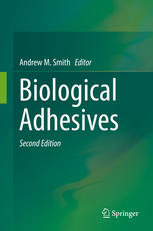

Most ebook files are in PDF format, so you can easily read them using various software such as Foxit Reader or directly on the Google Chrome browser.
Some ebook files are released by publishers in other formats such as .awz, .mobi, .epub, .fb2, etc. You may need to install specific software to read these formats on mobile/PC, such as Calibre.
Please read the tutorial at this link: https://ebookbell.com/faq
We offer FREE conversion to the popular formats you request; however, this may take some time. Therefore, right after payment, please email us, and we will try to provide the service as quickly as possible.
For some exceptional file formats or broken links (if any), please refrain from opening any disputes. Instead, email us first, and we will try to assist within a maximum of 6 hours.
EbookBell Team

4.8
34 reviewsThis book reviews the structure of different biological adhesives and the mechanisms by which they achieve interfacial adhesion, cohesive strength, and fracture toughness. These adhesives include cements, strongly adherent fibrous holdfasts, tough and flexible adhesive gels, energy-dissipating adhesive tapes, nanoparticle-based adhesives, hierarchically structured nanoarray adhesives and a wide variety of viscous, sticky secretions.
Biological adhesives are complex biomaterials that have evolved to meet a wide variety of functional demands, and which range from the micro- to the macro-scale. Some adhesives set rapidly, while others set over longer periods of time; others can readily detach and reattach to allow movement and to manipulate objects, while yet others have the ability to self-heal after sustaining damage.
Recent technological advances have expanded our ability to characterize these materials. Analyzing the physical and molecular structure, processing, chemical interactions and mechanical properties of these adhesives has yielded novel insights, which this new edition discusses in detail. These insights are likely to inform and guide the biomimetic development of new, powerful adhesives with desirable properties that are unmatched by today’s synthetic adhesives. Given the breadth and depth of its coverage, the book offers an invaluable source of information for industrial and academic researchers alike.